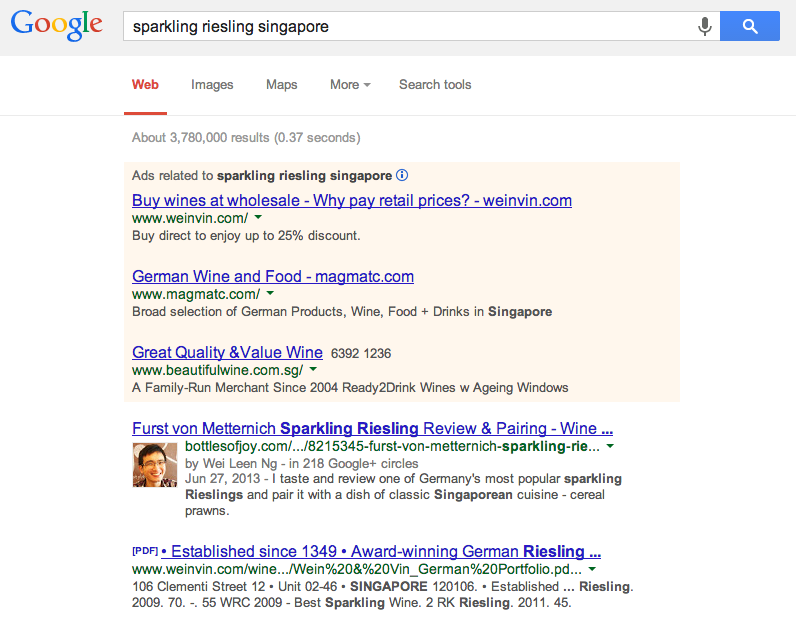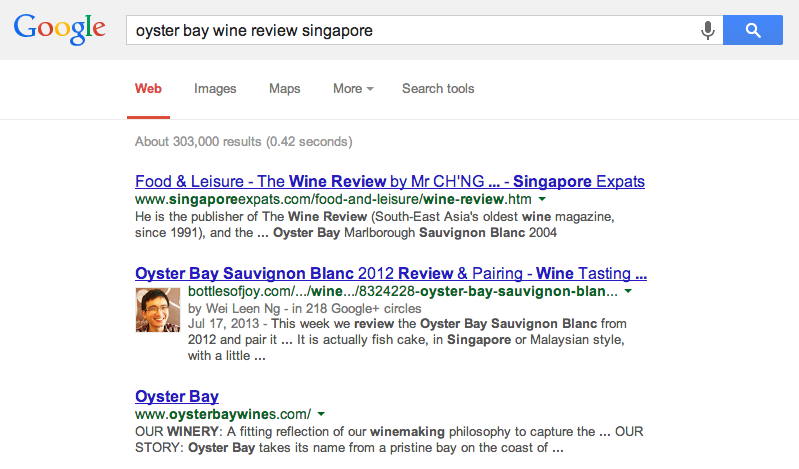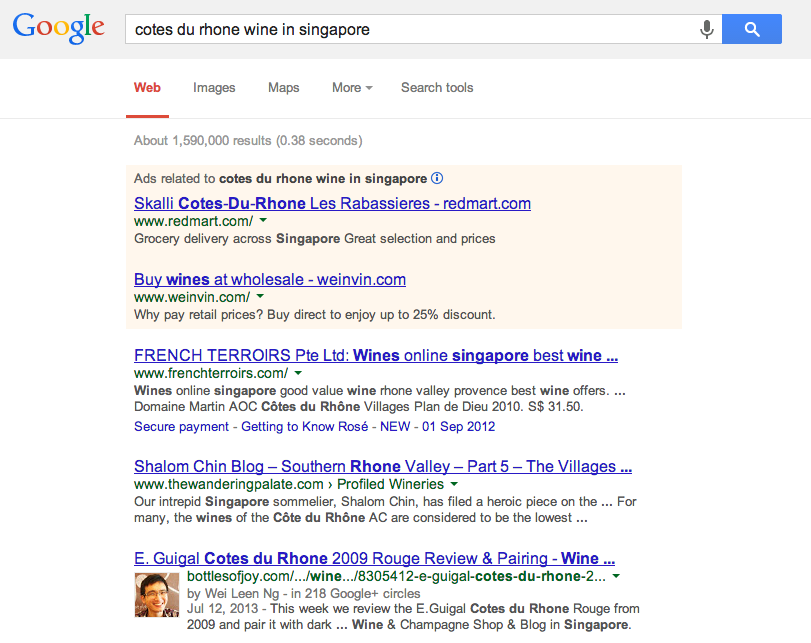How I Topped Google Search Results through Blogging!
I found out yesterday that I topped google search results for a very narrow set of searches, which means a lot to me because this was pretty much the wine that persuaded me to get started on wine blogging.

To celebrate the momentous occasion, I’d like to recount the steps that I gone through to give this post the best possible chance of it succeeding in reaching the top of Google search results, so that anyone reading can apply the same tactics to achieve a similar outcome. ;)
1. Choose your topic
I never took this step. The reason is simply that I knew what I wanted to blog about and it was in large part for passion, not SEO. That makes it easy.
If you are blogging tactically for your company, you should do some research. I will only describe the tools briefly here since this post isn’t about how to use these tools.
Use Google’s Keyword Planner to discover keywords that are searched for regularly by Google users. The higher the monthly local search volume and global search volume, the more traffic you could get. All you have to do is input at least 1 search query and click search. The tool will give you a list of keywords that contains hundreds of terms (usually). You can then pick and choose which ones you want to focus on. For instance a search for Christmas gifts could return “christmas gift ideas”, “christmas gifts for her”, “christmas gifts for children” etc.
To be thorough in your research, you could also use Google Trends. This handy tool shows you which keywords are trending over time. This can be important if you’re planning on writing content that is seasonal in popularity. For instance a Christmas post now would be ideal, but a Halloween post would be about 350 days too early.
2. Write a post
There are a few things you can do that will vastly improve your chances of making it to the top of Google.
The first and most important one is not even writing the post. Before all else, sign up for yet another social network - Google Plus. This is the first thing to setting up Google Authorship. Why you want this is that it shows your profile photo in the search results, and it also ticks a couple of boxes on Google’s search algorithm that gives you credit for SEO. Follow the steps outlined on the Authorship page to get your Google Plus profile linked to your website / blog.
Now you are finally ready to write your post! Whew! So go ahead, relax and let those creative juices flow. Once you’re done expressing yourself, it is time to apply the fruits of your labour from the research phase.
Take the keyword that you decided to target and put it in 3 places, namely the title of the page, first heading (typically \<h2>) of the post (if any), and first sentence of the post. Some people also advocate repeating the keyword a few times throughout the body of the post. I disagree strongly. The argument in favour of repeating the keyword is to have higher keyword ‘density’. This is strange because if I take it to its logical conclusion, a long, high quality post that doesn’t mention the keyword obsessively has a lower keyword density than a short, spammy post constantly parroting the keyword. I can’t believe Google would make that sort of mistake.
Anyway once you are done, bask in the glow of your terrific work.
3. Distribute it wherever you can
The last step in your creative odyssey is to spread your post far and wide while it’s hot off the press! Everybody has social influence, and this is where you get to show it. Facebook (profile and groups), Twitter, Google Plus are musts. Optionally, share also on Quora, Medium and so on.
I shared my post on the Bottles of Joy Facebook group, Twitter, and Google Plus.
The savvy readers among you would ask, but what about duplicate content? Won’t I get penalized for having the same content popping up elsewhere on the internet? The short answer is that there are no fixed rules on this. You’re likely to be better off erring on the side of proactively syndicating content. This post on Moz addresses the issue.
4. Measure results
Google can take between days to a few weeks to crawl your website depending on factors like PageRank and inbound links. I actually posted my Riesling content on June 27 but only noticed it showing up in my keyword reports a couple of days ago.
I use Moz for tracking my keywords ranking. It’s been great for me so I recommend it. You can get a 30 day free trial.
Here are a few other queries that I’ve started ranking for! Woot!


As a small thank you for reading this far and to encourage toasts to SEO well done, use the discount code TOPOFFGOOGLE when shopping on Bottles of Joy for $10 off! Which is equivalent to free shipping ;)
Tweetcomments powered by Disqus